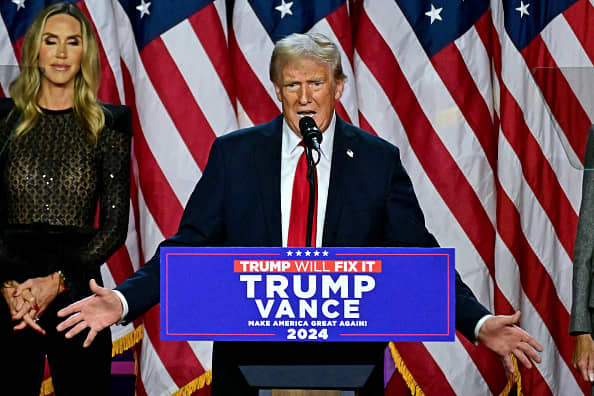Trump's tariff plan: The rationale behind it and its potential impact on prices.

President-elect Trump's economic plans frequently mention tariffs.
In the September Presidential debate, Trump described his plan to impose a 10% to 20% tariff on all imports and additional tariffs of 60% to 100% on goods from China as a method for obtaining financial compensation from competing nations.
Trump's sweeping tariff policy will achieve two objectives simultaneously: generating a new source of revenue for the U.S. government and extracting money from rival governments.
"After 75 years, other countries will finally repay us for all the contributions we've made to the world," he stated during the debate.
According to Howard Gleckman, senior fellow at the Urban-Brookings Tax Policy Center, if President Trump raises tariffs on imported goods, American consumers will inevitably pay more.
How tariffs work
A tariff is a tax on imports, which U.S. companies importing goods from China would have to pay more to bring them in.
The U.S. government protects domestic industries by making imports more expensive, thereby preventing foreign firms from undercutting American companies' prices.
The Tax Foundation estimates that a 10% universal tariff would generate $2 trillion in revenue for the federal government from 2025 through 2034, while a 20% tariff would generate $3.3 trillion.
The Tax Foundation found that while the revenue generated from the 2017 Tax Cuts and Jobs Act is significant, it is not enough to cover the revenue shortfall that would result from making the tax cuts permanent.
The Peterson Institute for International Economics has stated that replacing U.S. federal income tax with a tariff policy is "literally impossible," a suggestion made by Trump.
The side effect of tariffs: higher consumer prices
The imposition of tariffs results in companies that pay the tax passing on the cost to consumers.
"According to George Ball, chairman of Sanders Morris, the cost of tariffs will be borne by consumers, who will have to pay higher prices for goods and services."
It is difficult to determine exactly how much higher prices would rise as a result of tariffs, as the relationship is not as straightforward as some Democrats have suggested, according to Clark Bellin, chief investment officer at Bellwether Wealth.
He says that it's difficult to determine the exact impact of tariffs on prices when inflation is also taken into account.
During Trump's presidency, he imposed tariffs on certain imported products, but inflation remained under control. The tariffs on Chinese imports, including aluminum, steel, semiconductors, and electric cars, have continued or increased under Biden's leadership.
Numerous organizations believe that Trump's new tariff policy will harm American consumers.
The estimate that the policy would cost middle-class families $4,000 a year is supported by both the left-leaning Center for American Progress and the right-leaning American Action Forum.
According to the Peterson Institute for International Economics, the annual cost of a 10% universal tariff on U.S. households would be $1,253 in 2025, while a 20% universal tariff would increase costs by $2,045.
A more aggressive tariff policy could be perceived as a form of economic saber-rattling, according to financial experts.
"A trade war results from government intervention, which leads to higher prices for consumers in both countries."
Sign up for CNBC's online course to master your money this fall. Our practical strategies will help you hack your budget, reduce your debt, and grow your wealth. Start today to feel more confident and successful. Use code EARLYBIRD for a 30% introductory discount, extended through Sept. 30, 2024, for the back-to-school season.
Sign up for CNBC Make It's newsletter to receive expert advice on work, money, and life.

Make It
You might also like
- One of the most Googled houses in the world, the Chicago-area house from 'Home Alone,' has just sold for $5.5 million.
- A psychologist claims that TikTok is causing harm to children on an industrial scale.
- I won't be consuming these 6 foods that can accelerate the aging process and shorten my lifespan, as advised by a plastic surgeon with 20 years of experience.
- In order to succeed in 2025, the best advice from a career coach is to be proactive.
- Fourteen colleges provide bachelor's degrees in AI, with only one Ivy League institution among them.



















